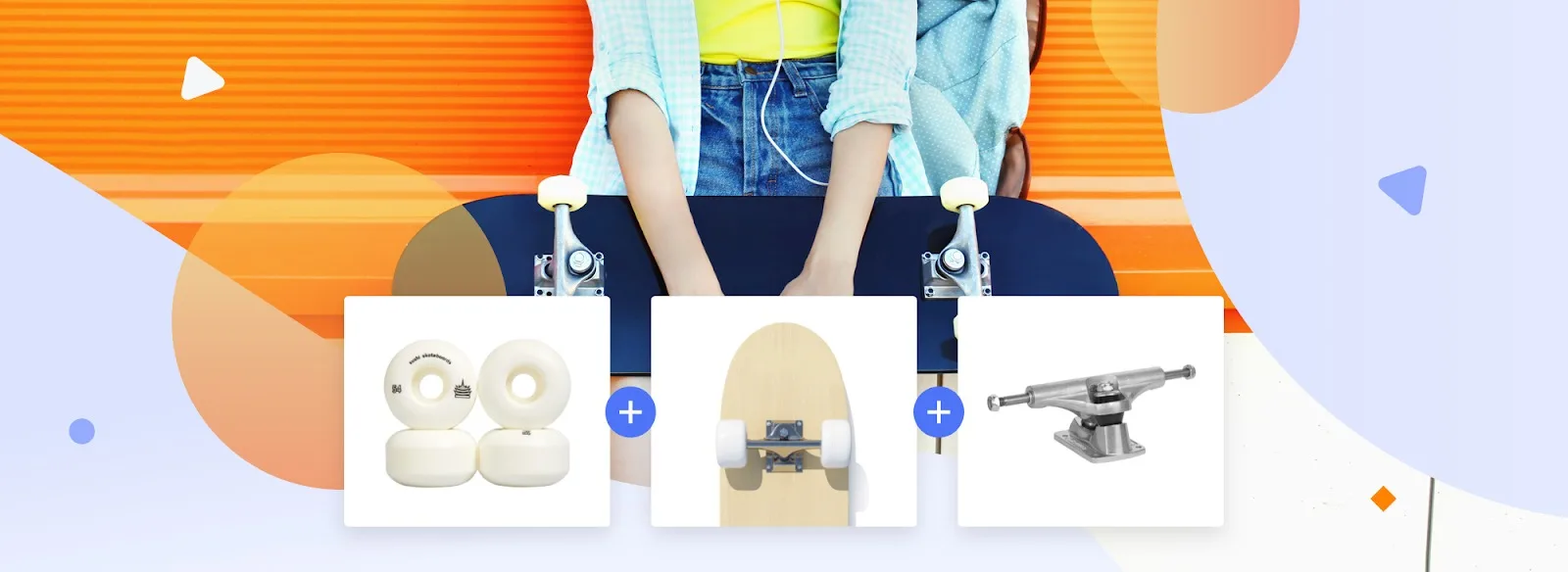You Can’t Afford to Ignore The Benefits of SaaS: It’s Brand Bankruptcy or Digital Transformation

It’s decision time for traditional retailers.
Time to decide whether you’re going to use an old self-hosted platform and business model that holds you back, or make a game-changing decision to use cloud and SaaS to take your business into the future.
For you, Amazon’s commodity market is profitable but earns little brand equity.
And micro-brands numbering in the thousands are chipping away at your brand recognition and loyalty – with much smaller teams and much smaller budgets.
You’re getting squeezed in the middle – and there’s only one way to stop it: innovate at speed and cost.
If you don’t, your company won’t be around in five years.
You simply won’t be able to compete.
I know that because I’ve seen a lot of changes to the world of ecommerce since I started working in the industry over 15 years ago.
Back then, nearly all of the ecommerce sites I built were bespoke, self-hosted solutions.
I worked for a Magento Gold Partner agency for almost 5 years, and during that time I saw the many limitations and challenges of self-hosted ecommerce platforms.
Although they were designed with flexibility in mind, many necessary functions like integrating other systems or securing development talent at any kind of reasonable cost were massive money and time debt centers.
The plain truth of it was that self-hosted platforms like Magento were very complex to work with and took a long time to go to market.
But, they were the only options available. That’s no longer the case.
Why SaaS: Making the Move
When I worked agency side, we started building ecommerce sites on SaaS platforms like BigCommerce.
I already knew the benefits of SaaS across other pieces of the commerce platform stack, including:
Omnichannel commerce technologies.
OMS Systems.
WM Systems.
ERPs like NetSuite.
I quickly saw that working on SaaS ecommerce platforms was so much easier than working with self-hosted platforms, especially at the enterprise level with integrated systems.
The SaaS benefits are easy to see
It is much less expensive.
Doesn’t require an army of specialized developers.
Companies can go to market much faster.
This is how those micro-brands outcompete you with less resources and capital. And you can fight back.
Traditional retailers are starting to realize the benefits software as a service, and of making the move to SaaS.
I saw the writing on the wall.
In fact, I witnessed a large migration to SaaS across the entire commerce and business technology stack, not just the ecommerce platform itself.
However, large organizations don’t always move as quickly as they should — even when it’s in their best interests.
Fear and technology investment debt are holding traditional retailers back, allowing Amazon (and other marketplaces) to strike from the top and micro-brands to attack in the thousands from below.
Death by a thousand cuts if you will.
The black swan for your business isn’t a disrupting startup. It’s a line item on your P&L.
The Fear of the Unknown
I started recommending SaaS ecommerce platforms to my customers, but many initially pushed back and were hesitant to make the move.
Although they wouldn’t say it directly, I think the fear of the unknown kept them from making the logical move to SaaS.
Let me explain.
When you have a legacy with any self-hosted technology, you loathe to throw out those investments.
You’ve made massive investments in people, processes, and technology to get up to speed on your self-hosted platform.
You feel like all of that will have been a waste if you go to SaaS.
When you’ve invested heavily in people with back-end development skills, you’re worried about what all those developers are going to work on if you move to a SaaS platform.
And believe me, I get it:
Making the decision to move away from traditional on-premise software that is in its little silo of ownership and management within the business can be extremely difficult.
It threatens your position of knowledge, of authority, of power, of control. It may even threaten your livelihood and potentially your career if you get it wrong.
In short, it all comes down to the fear factor.
It’s change, and many people perceive change to:
Be too difficult.
Be too expensive.
Take too much time and planning.
But in my experience, when it comes to business, what change really takes is leadership and vision more than anything else.
The Digital Influence
Digital is driving your businesses to change whether you like it or not.
It behooves you to work with vendors, partners, and consultants who have a track record of success.
Partnering with the right people that can give you the confidence you need to move forward is critical for making the move to SaaS.
The need for speed-to-market in terms of the initial build, integrations, and deployment of the stack is important for this switch, but it’s also the need for speed in the evolution of the user experience for your customer.
On self-hosted platforms, change is more painful. The simple truth is that self-hosted technologies are not designed for the pace of change of business today.
With self-hosted technology, you can literally spend months configuring, testing, and load-testing the infrastructure behind the technology as opposed to actually being in market making money.
Again, the SaaS benefits here at clear. You can:
Be in market within weeks
Avoid all of the development hassles
Dramatically lower your costs
Not have to worry about security since SaaS ecommerce companies handle PCI compliance.
Disruptors, led by APIs, Are Forcing Change
Three of the most disruptive factors that I’ve seen in my 15 years in digital are mobile, SaaS, and APIs.
These three disruptors are closely related in many respects, but API-led connectivity, an API-led technology, an API-led organization, an API-led economy is the future.
This is yet another benefit of the SaaS model: the API-led approach sets them up perfectly for the future of commerce where best-of-breed technologies can be easily added as custom integrations.
Self-hosted platforms are going to be left behind.
Emerging Ecommerce Trends
Many trends are taking shape in ecommerce, but maybe none more prevalent than voice commerce.
It’s already more disruptive than most businesses can appreciate.
In fact, voice is changing online shopping as we know it.
While the vast majority of ecommerce businesses still rely on organic, paid, and email channels to drive traffic, we’re moving to a voice-driven world where this model becomes totally challenging — especially if you aren’t an omnichannel business.
If you don’t believe that voice is on the verge of changing ecommerce as we know it, consider this: Google says it has sold a Google Home device every second since October 19, 2017.
Voice commerce is going to be the biggest game changer we’ve seen in commerce in probably a decade.
Google recently implemented Shopping Actions, which effectively turns them into an Amazon-like marketplace except that they’re not selling against their merchants.
And the transaction is going to be taking place directly within Google.
Merchant partners of Google that are already selling via Google Shopping, which redirects back to the merchant, is going to be a thing of the past.
Google wants to be able to clip the ticket across every stage of the transaction — from the marketing to the payment to the fulfillment.
This is Google’s answer to a voice world and it’s going to integrate tightly with Google Home and Google Assistant. It’s probably the biggest change to Google’s fundamental architecture that we’ve seen since there was a Google.
Leading SaaS ecommerce platforms are developing AI integrations to be on the vanguard of voice search technology and to give you the features you need to satisfy customers.
The Future Is Here
As we continue to move into a relationship marketing model that’s informed by content, blended with commerce, and based on experience, you have to be extremely agile and highly adaptable to thrive in our ever-changing marketplace.
After all, the only constant is change, and you’re going to have to get really comfortable with it because it’s coming whether you like it or not.
SaaS ecommerce solutions are, by far, the best platforms for enabling you to quickly adapt to change while achieving a lower total cost of ownership, a faster time to market, greater security, and everything you need to deliver a world-class online shopping experience.
Fear isn’t an option.

Jason Greenwood has specialized in digital transformation in the enterprise for over 15 years. He has previously owned his own ecommerce pure play, worked in the digital/ecommerce agency space, and is currently the ecommerce Manager for New Zealand's largest online retailer of natural health products, HealthPost. He also consults on digital transformation in the ANZ region. Jason is a digital industry thought leader, sought after keynote speaker and loves sharing his passion, experience and knowledge in digital with the wider world. Jason believes that the best digital technologies & experiences help unleash, enhance and inspire human potential. You can connect with him on LinkedIn.


